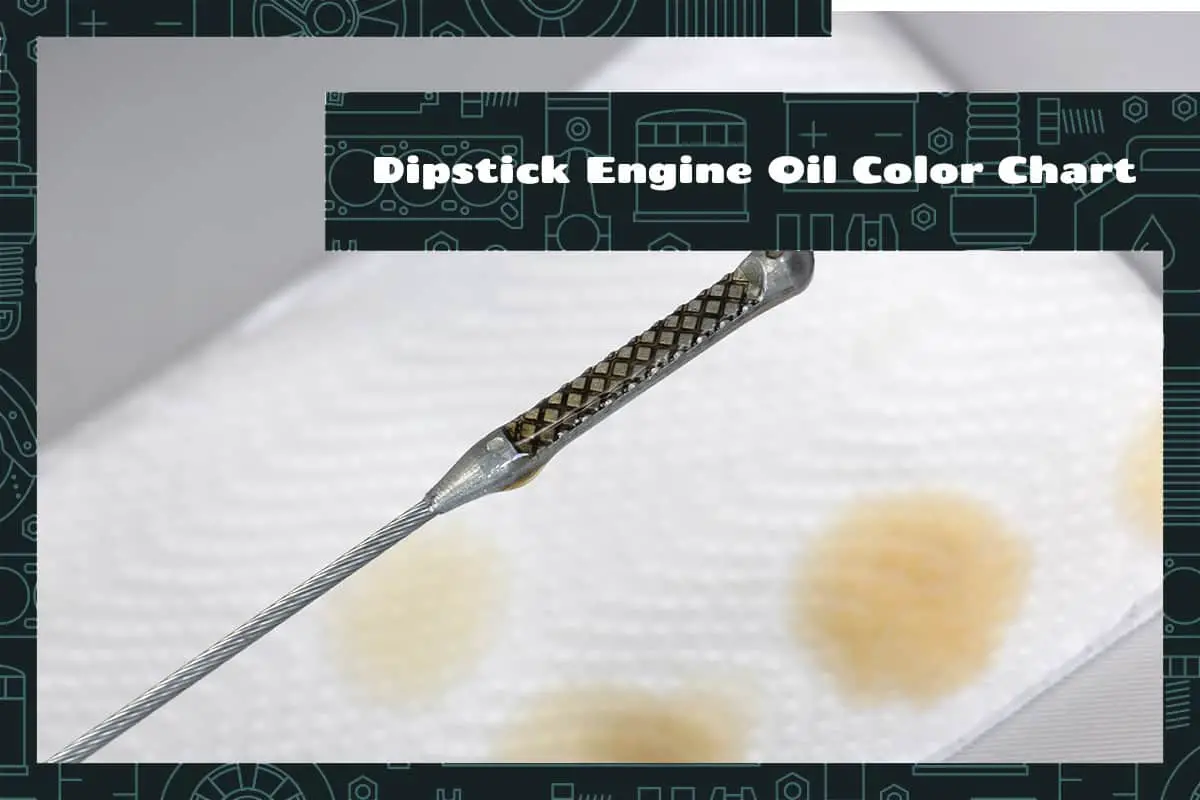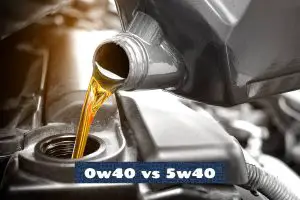Engine oil reduces friction in your engine, cooling engine parts and maintaining overall engine performance. However, not many people are aware that the color of the engine oil can reveal a lot about the engine’s health and the need for maintenance.
Here are the different colors of engine oil you will find on the dipstick and what they mean:
- Fresh Oil: Amber
- Normal Use: Light Brown to Dark Brown
- Potential Issues: Black
- Coolant Leak: Milky White
- Blown Head Gasket: Yellowish-Brown Foam
This article delves into the detailed interpretation of the dipstick engine oil color chart, helping you understand what each color signifies.
What is a Dipstick and Its Functions?

The dipstick is a metal rod usually located near the engine block, with markers that help measure the oil level in your vehicle’s engine. It serves as your car’s health monitor, acting as a window into your engine’s condition.
A routine check of the dipstick can help you detect potential problems before they escalate, saving you time, money, and possible headaches down the line. The primary function of the dipstick is to indicate the oil level, but it also provides vital information about the oil’s color, consistency, and potential contamination.
How to Use a Dipstick to Check Engine Oil Levels
Using a dipstick to check engine oil levels is a straightforward process that any car owner can do. Ensure the engine is off and has been idle for a few minutes to allow the oil to settle. Here are step-by-step instructions:
- Locate the dipstick: It’s typically marked with a brightly colored handle for easy identification, often yellow or orange.
- Remove the dipstick: Pull it out carefully, avoiding any contact with hot engine components.
- Clean the dipstick: Use a clean, lint-free rag to wipe off the oil from the dipstick.
- Reinsert the dipstick: Put it back into the tube as far as it will go.
- Pull out the dipstick again: Now, the dipstick will show the accurate oil level.
- Read the oil level: Check where the oil film ends in relation to the markers on the dipstick. If it’s between the minimum and maximum marks (often indicated by two notches, holes, or an engraved area), your oil level is satisfactory. If it’s below the minimum mark, you’ll need to add oil.
Beyond just checking the oil level, you can also inspect the color and consistency of the oil. This can be done by dabbing a little oil from the dipstick onto a white cloth or paper towel. An oil color chart comes in handy to interpret the findings.
Decoding the Dipstick Engine Oil Color Chart
To decode the color chart, it’s essential to understand what the different oil colors signify:
| Engine Oil Color | Remarks |
| Amber or Light Brown | Fresh, new engine oil is typically amber or light brown, much like honey. This color signifies that the oil is clean and ready to lubricate and protect the engine’s internal components effectively. If you’ve just had an oil change, this is the color you’ll typically see. |
| Dark Brown | As the oil performs its function of cleaning, cooling, and lubricating the engine, it will darken. Dark brown oil is a sign that the oil has been in use for a while and is collecting debris and dirt from the engine. This is normal up to a certain point. |
| Black | Engine oil can turn black after extended use. This color indicates that the oil is doing its job of cleaning the engine by absorbing contaminants and residues. However, if the oil is black immediately or soon after an oil change, it may signal a problem, such as a failed oil filter or a more severe engine issue. |
The Appearance of Other Colors in Engine Oil

When checking your vehicle’s engine oil, you generally expect to see shades ranging from amber to black. However, sometimes the oil can exhibit unexpected colors and consistencies. This can provide key insights into potential issues with your car’s engine.
White or Milky Engine Oil: Indication of Coolant Leak
Milky or white-colored engine oil is not a good sign. This unusual color typically indicates that coolant is leaking into the engine oil. The coolant and oil do not mix and form an emulsion that gives the oil a milky appearance.
This can occur due to several reasons. A blown head gasket, a cracked cylinder head, or a damaged engine block can allow coolant to seep into the oil. It’s also possible that a problem with the oil cooler (in vehicles equipped with one) could cause coolant to leak into the oil.
The presence of coolant in the engine oil is a serious issue because it dilutes the oil, reducing its ability to lubricate the engine components effectively. This can lead to increased friction, overheating, and significant engine damage over time.
Yellowish-Brown Foamy Oil: Symptom of a Blown Head Gasket
If you notice that your engine oil is a yellowish-brown color and has a frothy consistency, this is another red flag. Similar to white or milky oil, this can be a sign that coolant is leaking into the oil. In this case, the specific color and frothy appearance often suggest a blown head gasket.
The head gasket serves as a seal between the engine block and the cylinder head. If it fails, coolant can leak into the oil passages. When the coolant mixes with the engine oil, it can create a frothy consistency, much like a coffee latte. This is because the coolant and oil are being forcibly mixed together by the engine’s moving parts.
Engine Oil Consistency Along with Color
Engine oil should ideally be smooth and free-flowing, much like cooking oil. It’s designed to create a thin, lubricating layer between the moving parts of your engine, reducing friction and ensuring the engine runs smoothly.
If the oil’s consistency changes, it could impact the oil’s ability to perform these functions effectively. Therefore, checking the oil’s consistency is as essential as noting its color during a routine oil check.
Thick and Sludgy Oil
If you notice that your engine oil is thick and sludgy, this is a serious cause for concern. Sludgy oil is usually a sign that the oil hasn’t been changed in a long time.
The oil that’s too thick can’t circulate through the engine as efficiently as it should. This could result in inadequate lubrication, leading to increased friction, overheating, and potentially severe engine damage.
Thin and Runny Oil
On the other end of the spectrum, if the engine oil appears thin and runny, almost like water, this is also an issue. Thin, runny oil could indicate fuel contamination.
Fuel can end up in the oil for several reasons, such as a leaking fuel injector or prolonged idling. Too much fuel in the oil can dilute it, affecting its viscosity and reducing its lubricating properties.
Debris in Oil
If you notice visible particles in the oil when you’re checking it, this could be an indication of internal engine wear or damage. Tiny metallic particles can be produced when engine components rub against each other due to inadequate lubrication.
The presence of debris in the oil could indicate that the oil isn’t effectively suspending and carrying away these particles, which can lead to further engine wear.
When to Replace Engine Oil
When you first add new engine oil to your vehicle, it has a light amber color. As the oil performs its job of lubricating the engine and capturing debris and contaminants, it will darken. This change in color is normal and doesn’t necessarily mean that the oil needs to be replaced immediately.
Regularly checking your engine oil’s color and consistency can help you decide when it’s time for an oil change. Usually, that time is every 3,000 miles, depending on how often you drive, the condition of your vehicle, and your driving behavior.







